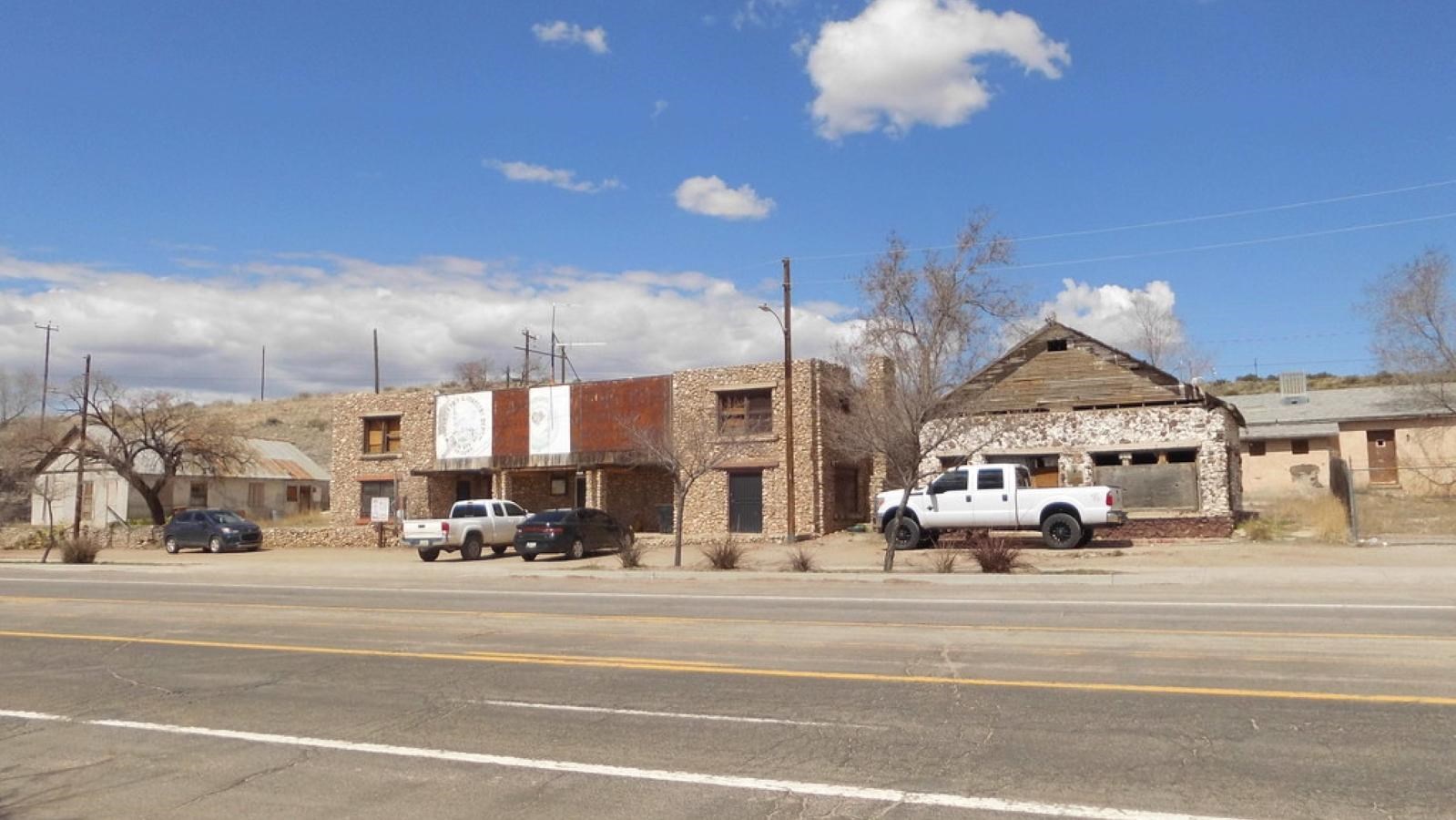Last updated: June 6, 2022
Place
Arizona: Peach Springs Trading Post

Photo by Wallyum, CC BY-NC 2.0., https://creativecommons.org/licenses/by-nc/2.0/, no changes
Peach Springs lies within the traditional territory of the Hualapai people. The springs were reliable water sources that were used by American Indians for centuries. Euro-American colonists became aware of the springs during explorations in the eighteenth and nineteenth centuries. Beginning in 1858, emigrants along the Beale Wagon Road increasingly used Peach Springs as a rest stop and watering place.
With the "Good Roads" movement of the 1910s came the National Old Trails Road, which led to a new era of prosperity for the town. By 1917, E. H. Carpenter opened a trading post. In 1921, his friend Ancel Early Taylor bought a half interest in the store, and by 1924 Taylor was the sole owner of the Peach Springs Trading Post. In 1926, the National Old Trails Road became part of Route 66. With the widening and improving of the road, traffic through the town steadily increased. Taylor’s trading post business boomed, and two years later he razed the frame store and constructed a new stone building to house the trading post.
The 1928 Peach Tree Trading Post had stone walls, stepped parapets, heavy Ponderosa Pine vigas (exposed beams), and massive chimneys. Rocks were hauled from a spot on the side of a nearby hill, and pine logs were brought from the forest in the northeast part of the reservation. The building’s appearance reflects a blending of prehistoric and historic southwestern architectural styles, likely designed to appeal more to Route 66 tourists than to the surrounding Hualapai Tribe it also served.
The Peach Springs Trading Post enabled the Hualapai people to trade traditional craft items like baskets and food for canned foods, cloth, medicine, and other processed goods. Occasionally the Hualapai also pawned items, redeeming them if they were able or leaving them for eventual sale. The Peach Tree Trading Post did a brisk business selling crafts to tourists passing through on Route 66 and the Santa Fe Railroad. The trading post connected American Indian and Euro-American people, and served as a local meeting place for news and gossip and medical help. New owners bought the Peach Springs Trading Post in 1936 and continued to operate it in similar ways.
The Hualapai Tribe acquired the Peach Springs Trading Post circa 1950, and continued to use it as a post office and store until 1965 when the post office moved to a new building. In the early 1970s, after the construction of a new tribal store in Peach Springs, the old trading post became office space for the Job Corps. Soon after, the new Interstate 40 between Kingman and Seligman bypassed the 84-mile stretch of Route 66 that had passed through Peach Springs. One local business owner recalled, “Before the bypass, Route 66 was almost like a Big City street. After completion of Interstate 40, it was ghostly quiet.” That’s why Peach Springs, Arizona served as an inspiration for the fictional town Radiator Springs in the Pixar movie Cars, which depicts the losses that it and many other cities along Route 66 faced after they were bypassed by Interstate 40. The Peach Springs Trading Post was listed in the National Register of Historic Places in 2003.
The Peach Springs Trading Post is at 863 Highway 66 in Peach Springs, AZ and is used as offices for the Hualapai Tribal Forestry, Wildlife Conservation, and Game and Fish.
See the Peach Springs Trading Post National Register nomination form.
